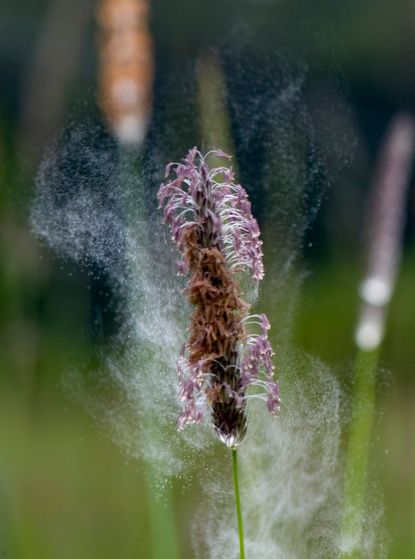How To Keep Hay Fever Under Control

If you're one of the millions of Brits who suffer friom hay fever, spring is likely to be the most miserable time of the year - but antihistamines aside, there are lots of simple hay fever solutions.
Britain has one of the highest prevalance of hay fever in the world, with about 12 million sufferers. Many people are getting hay fever for the first time at an older age, with some people starting to get symptoms in their fifties. The pollen season is also getting longer, with wetter, warmer and possibly earlier springs.
Hay fever symptoms
Stinging eyes, blocked or streaming noses, endless sneezing - hay fever symptoms are pretty horrendous, and it's all down to your immune system reacting to pollen as if it were a poison. Histamine is created in the body in response to the allergen and this causes inflammation in the body, leading to the swelling of the nasal passages and restriction of the amount of air that can pass through the nose. Eyes become itchy, red or watery, and vision can be affected. Sometimes the respiratory passages in the chest are affected, too, causing wheezing and discomfort.
Hay fever treatment
Many people can control hay fever symptoms with medications, such as nasal corticosteroids and antihistamines, but quite a few people struggle with side effects that are often attributed to these medications, such as stinging from nasal sprays and drowsiness from antihistamines.
Avoiding pollen
Sign up for the woman&home newsletter
Sign up to our free daily email for the latest royal and entertainment news, interesting opinion, expert advice on styling and beauty trends, and no-nonsense guides to the health and wellness questions you want answered.
Common advice is to stay indoors in the morning and evening to avoid the highest pollen levels - but this is just the time you need or want to be out and about.
The first step to stop breathing in as much pollen is to use a pollen-barrier balm. This works by trapping pollen in the nostrils before it gets in the body. Less pollen in means less or no reaction. Apply when you wake up, after showering and every four to six hours in between.
HayMax Organic Drug-Free Barrier Balms, £6.99 also work for dust and pet allergens, and are great for kids when they're taking exams.
Ease Congestion
A traditional steam bath can help - add a little menthol rub to clear your airways. Too strong? Try Happinose Balm Soothing Nasal Congestion Relief, £3.45. It contains a gentle blend of levomenthol, eucalyptol and geranium oil.
Soothe Irritated Eyes
If you can, take time out to sit somewhere quiet and dark indoors. A couple of cold chamomile tea bags or slices of chilled cucumber on the eyes can help relieve the puffiness hay fever causes.
Optrex ActiMist 2in1 Eye Spray for itchy and watery eyes, £14.39, repairs the eye's natural protective moisture barrier to reduce moisture loss.
Stop That Itchy Throat
One of the most forgotten, yet painful, hay fever symptoms is the sore throat, and there are a number of reasons for this problem developing.
Hay fever blocks the nose and sinus, sufferers are forced to breathe through their mouth constantly, which leaves the throat sore, red, dry and irritated. Also, hay fever causes sinus damage, or 'post nasal drip'. This is a build-up of mucus at the back of the throat then 'drips' down to the throat and can result in pain and infection.
Ultra Chloraseptic Anaesthetic Throat Sprays, £5.75, help ease a sore throat caused by hay fever by going directly to the site of the pain. It contains the active ingredient Benzocaine, a local anaesthetic.
Eat To Beat Hay Fever
Nutritional therapist Alison Cullen, from A.Vogel, says what you eat and drink can help reduce hay fever symptoms.
She recommends cutting back on caffeine and instead opting for anti-inflammatory green or white tea. Caffeine triggers histamine release which can bring skin up in a red, itchy, angry looking rash.
Also, avoid mucus-inducing dairy products, reduce sugar (this triggers an adrenaline surge that activates histamine release), top on vitamin C because it's a natural anti-histamine and fill your plate with anti-inflammatory foods like purple grapes, blueberries, blackberries, salmon, raisins and butternut squash.
-
 32 candid photos of Queen Elizabeth II that showcase the late monarch's less serious side
32 candid photos of Queen Elizabeth II that showcase the late monarch's less serious sideThe late Queen had lots of serious duties, but she was never afraid to show her funnier, more light-hearted side
By Amy Hunt Published
-
 The best candid pictures of the Prince and Princess of Wales having a great time together
The best candid pictures of the Prince and Princess of Wales having a great time togetherThe Prince and Princess of Wales aren't just man and wife - they're best friends who always have a fun time together
By Jack Slater Published